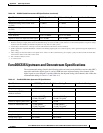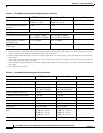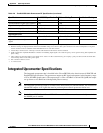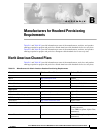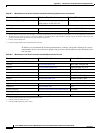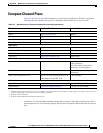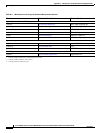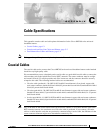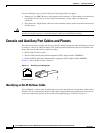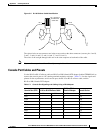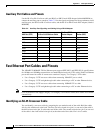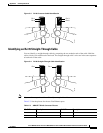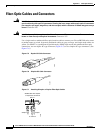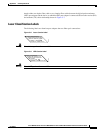
C-1
Cisco uBR7100 Series and Cisco uBR7100E Series Universal Broadband Router Hardware Installation Guide
OL-5916-01
APPENDIX
C
Cable Specifications
This appendix contains cable and cable pinout information for the Cisco uBR7100 series universal
broadband routers.
• Coaxial Cables, page C-1
• Console and Auxiliary Port Cables and Pinouts, page C-2
• Fast Ethernet Port Cables and Pinouts, page C-4
Note This appendix specifies pinouts only for the pins used. Pins not listed in the tables are not connected.
Coaxial Cables
The coaxial cable used to connect the Cisco uBR7100 series universal broadband routers at the headend
should be very high-quality cable.
We recommend that you use a headend-grade coaxial cable or a quad-shield coaxial cable to connect the
cable modem cards to the hybrid fiber-coaxial (HFC) network. The center conductor must be straight
and extend 1/8 inch (3.2 mm) beyond the end of the connector, and the connector should be securely
crimped to the cable. The following headend cables are recommended:
• 59-series cable (preferred)—20 AWG (0.032 inch/0.81 mm diameter) silver plated, copper-clad,
steel center conductor; bonded foil inner shield; 95 percent braid second shield; nonbonded foil third
shield; 95 percent braid fourth shield.
• 59-series quad shield—20 AWG (0.032 inch/0.81 mm diameter) copper-clad steel center conductor;
bonded foil inner shield; 53 percent braid second shield; nonbonded foil third shield; 34–35 percent
braid fourth shield.
• 6-series quad shield—18 AWG (0.0359 inch/0.91 mm diameter) copper-clad steel center conductor;
bonded foil inner shield; 60 percent braid second shield; nonbonded foil third shield; 40–42 percent
braid fourth shield.
Note Any of the three of the coaxial cables listed can be used to connect a Cisco cable interface card to the
HFC network; however, the consistent use of 59-series cable is preferred. If you connect a 59-series
cable to a cable interface card that was previously connected using 6-series cable, the difference in the
center connector diameter might cause intermittent connectivity loss.



